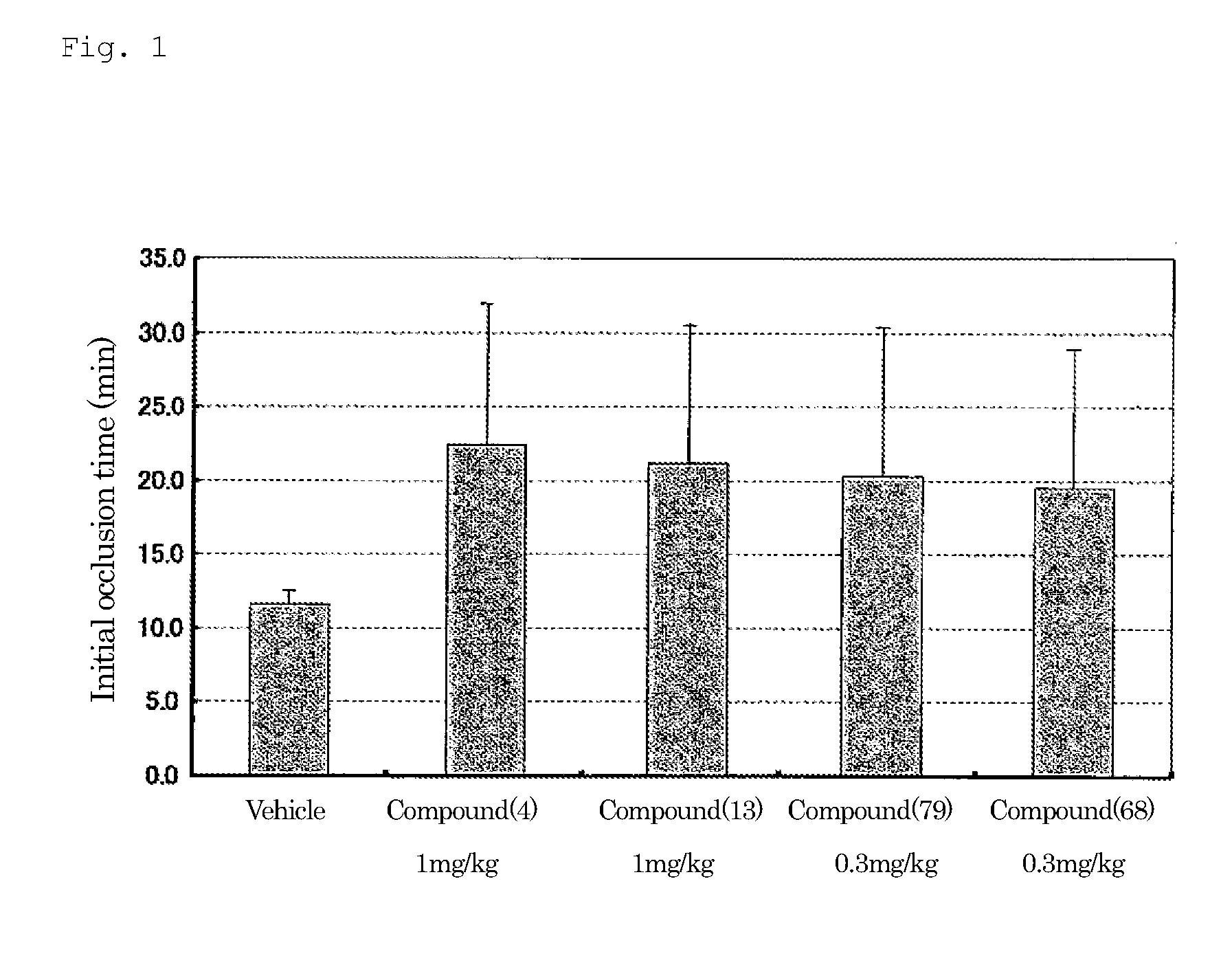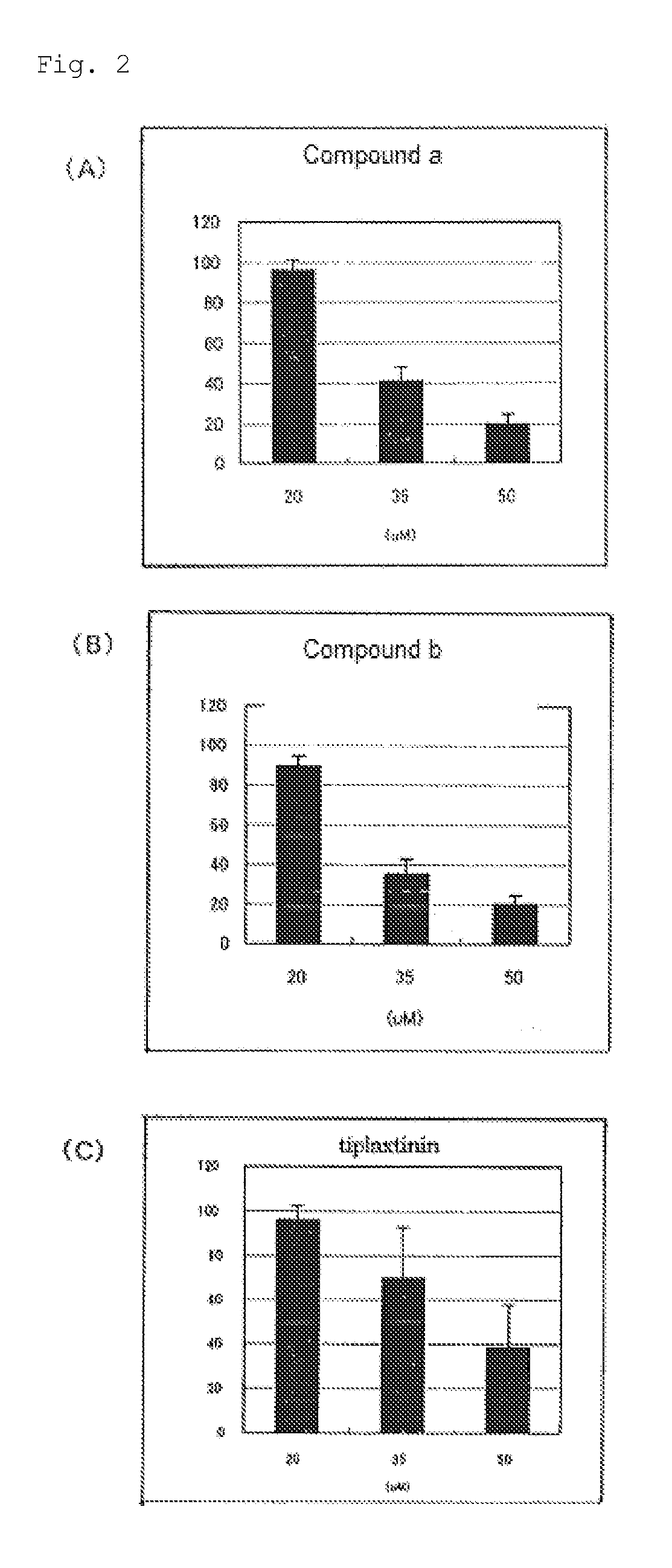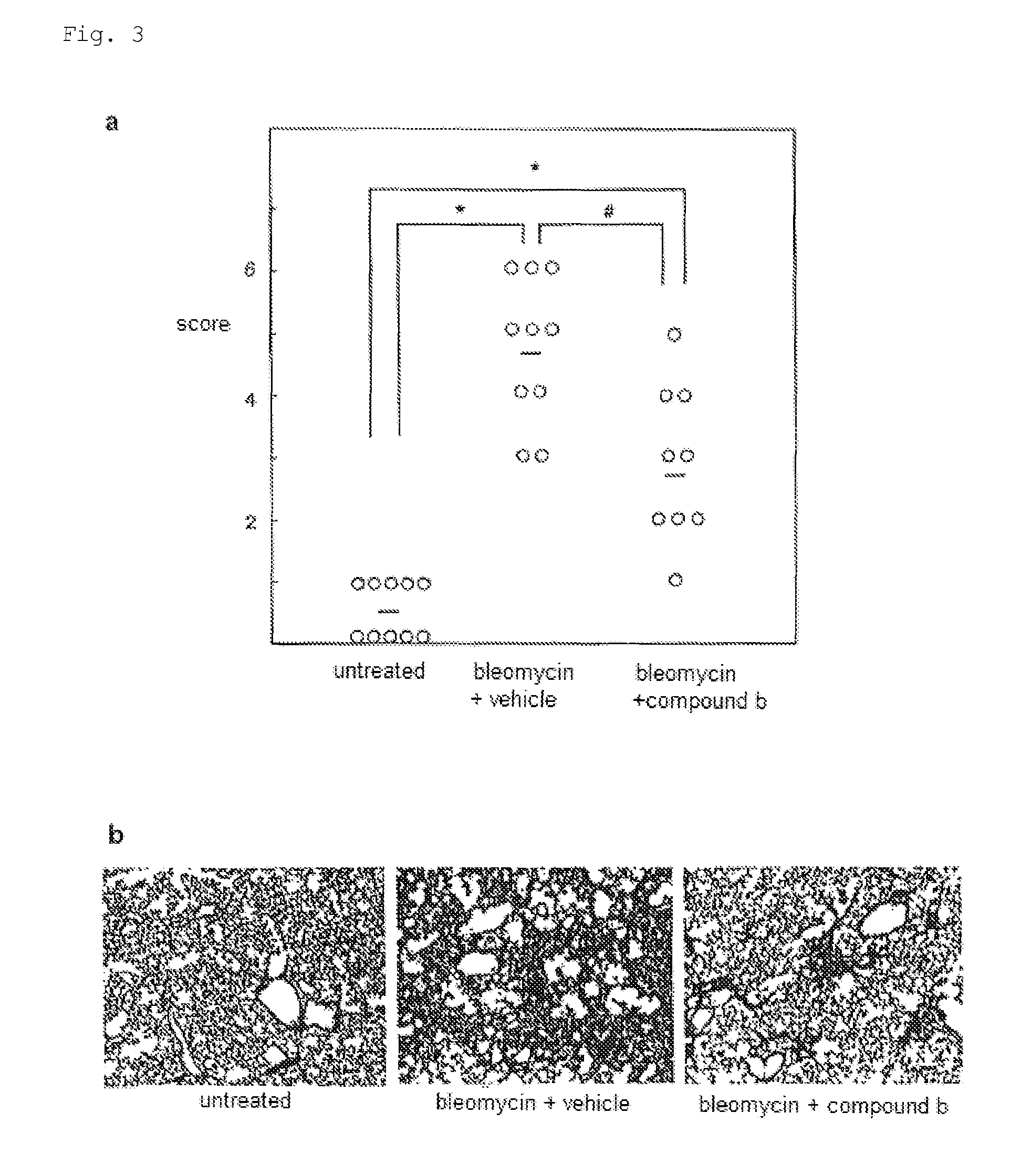Plasminogen activator inhibitor-1 inhibitor
a technology of plasminogen activator and inhibitor, which is applied in the direction of drug composition, metabolic disorder, cardiovascular disorder, etc., can solve the problems of not being considered highly productive or safe, and achieve the effects of preventing or treating thrombosis, and high inhibitory effect on pai-1
- Summary
- Abstract
- Description
- Claims
- Application Information
AI Technical Summary
Benefits of technology
Problems solved by technology
Method used
Image
Examples
example 1
Production of 5-chloro-2-{[4-({[3-(furan-3-yl)phenyl]carbonyl}amino)butanoyl]amino}benzoic acid (1)
[0644]The target compound (1) was synthesized according to the following Steps (i) to (iv).
(i) Methyl 2-({4-[(tert-butoxycarbonyl)amino]butanoyl}amino)-5-chlorobenzoate
[0645]3.00 g (13.8 mmol) of N-tert-butoxycarbonyl-γ-aminobutyric acid, 3.38 g (17.7 mmol) of p-toluene sulfonyl chloride, and 3.64 g (44.3 mmol) of 1-methyl imidazole were stirred in an acetonitrile solvent at 0° C. for 1 hour. Subsequently, 2.74 g (14.8 mmol) of methyl 2-amino-5-chloro benzoate was added thereto, and the mixture was stirred at 50° C. for 1 hour. Thereafter, the solvent was distilled off under reduced pressure, and ethyl acetate was added. The mixture was washed with water, the organic layer was dried over anhydrous sodium sulfate, and the solvent was distilled off under reduced pressure. The obtained crude product was recrystallized using a mixed solvent of isopropyl ether (IPE) and n-hexane, thereby gi...
example 2
Production of 5-chloro-2-({[3-(furan-3-yl)phenyl]carbonyl}amino)benzoic acid (2)
[0653]The target compound (2) was synthesized according to the following Steps (i) to (ii).
(i) Methyl 5-Chloro-2-({[3-(furan-3-yl)phenyl]carbonyl}amino)benzoate
[0654]0.50 g (2.7 mmol) of 3-(furan-3-yl)benzoic acid, a catalytic amount of N,N-dimethylformamide (DMF), 0.78 g (3.7 mmol) of oxalyl chloride were stirred at 0° C. for 30 minutes in 10 mL of THF. Thereafter, the solvent was distilled off under reduced pressure. 0.49 g (2.7 mmol) of methyl 2-amino-5-chlorobenzoate and 5 mL of DMAc were added to the obtained residue at 0° C., and the mixture was stirred at room temperature for 0.5 hours. After the completion of the reaction, an aqueous sodium hydrogen carbonate solution was added. The precipitated solids were collected by filtration, followed by washing with water and IPE, thereby giving 0.63 g of methyl 5-chloro-2-({[3-(furan-3-yl)phenyl]carbonyl}amino)benzoate (yield: 67%).
[0655]1H-NMR (DMSO-d6) ...
example 3
Production of 5-chloro-2-({[3-(furan-3-yl)phenyl]acetyl}amino)benzoic acid (3)
[0658]The target compound (3) was synthesized according to the following Steps (i) to (ii).
(i) Methyl 5-chloro-2-({[3-(furan-3-yl)phenyl]acetyl}amino)benzoate
[0659]0.25 g (1.2 mmol) of [3-(furan-3-yl)phenyl]acetic acid, a catalytic amount of DMF, and 0.36 g (1.7 mmol) of oxalyl chloride were stirred in 10 mL of THF at 0° C. for 1.5 hours. Thereafter, the solvent was distilled off under reduced pressure. 0.23 g (1.2 mmol) of methyl 2-amino-5-chlorobenzoate and 5 mL of DMAc were added to the residue at 0° C., and the mixture was stirred at room temperature for 1.5 hours. After the completion of the reaction, the mixture was diluted with ethyl acetate, washed with an aqueous sodium hydrogen carbonate solution and saturated saline, and dried over anhydrous sodium sulfate. The obtained crude product was separated and purified by silica gel column chromatography, thereby giving 0.3 g of methyl 5-chloro-2-({[3-(f...
PUM
 Login to View More
Login to View More Abstract
Description
Claims
Application Information
 Login to View More
Login to View More - R&D
- Intellectual Property
- Life Sciences
- Materials
- Tech Scout
- Unparalleled Data Quality
- Higher Quality Content
- 60% Fewer Hallucinations
Browse by: Latest US Patents, China's latest patents, Technical Efficacy Thesaurus, Application Domain, Technology Topic, Popular Technical Reports.
© 2025 PatSnap. All rights reserved.Legal|Privacy policy|Modern Slavery Act Transparency Statement|Sitemap|About US| Contact US: help@patsnap.com



